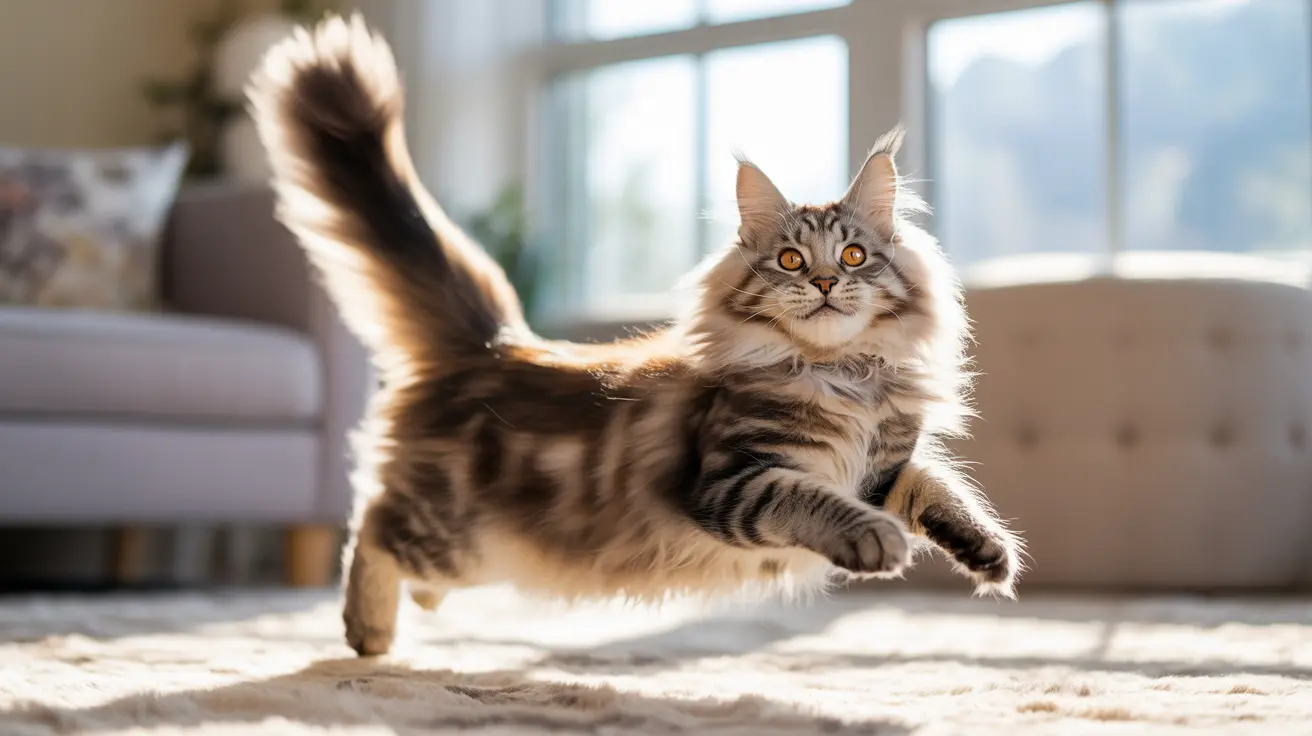The Natural Instinct Behind Tail Play
Cats are natural-born hunters, and their tails provide a perfect moving target for practicing their predatory skills. The constant motion of their tail triggers their hunting instincts, making it an irresistible target for play and practice. This behavior is particularly common in kittens, who are still developing their coordination and hunting abilities.
Adult cats may also engage in tail play as a way to stay active and maintain their natural hunting skills, even in a domesticated environment. The movement of their tail mimics that of potential prey, making it an always-available source of entertainment and exercise.
Developmental Benefits of Tail Play
For kittens and young cats, playing with their tails serves as an important part of their physical and cognitive development. Through this self-directed play, they learn about their body's capabilities, improve their balance, and develop crucial motor skills that will serve them throughout their lives.
Physical Coordination and Body Awareness
When cats chase and play with their tails, they're actually engaging in a complex form of exercise that helps them:
- Develop better spatial awareness
- Improve balance and agility
- Enhance their coordination
- Strengthen core muscles
When Tail Play Might Signal Problems
While tail play is generally harmless and natural, there are times when it might indicate underlying issues. Excessive or obsessive tail chasing, especially in adult cats, could signal:
Physical Health Concerns
- Flea infestations or skin irritations
- Neurological issues
- Pain or discomfort in the tail area
- Allergies or other skin conditions
Behavioral Issues
- Stress or anxiety
- Boredom
- Lack of environmental enrichment
- Compulsive behavior
Creating a Healthy Environment for Your Cat
To ensure your cat maintains a healthy relationship with tail play while getting adequate stimulation, consider implementing these enrichment strategies:
- Provide interactive toys that simulate prey
- Schedule regular play sessions
- Create vertical spaces for climbing and exploration
- Rotate toys to maintain interest
- Ensure adequate exercise opportunities
Frequently Asked Questions
Why do kittens and adult cats play with or chase their tails?
Kittens and cats play with their tails as part of natural hunting behavior and physical development. For kittens, it helps develop coordination and motor skills, while adult cats may do it for exercise or entertainment.
Can tail chasing in cats be a sign of boredom or stress?
Yes, excessive tail chasing in adult cats can indicate boredom, stress, or lack of environmental enrichment. It's important to provide adequate stimulation and identify any potential stressors in their environment.
How can I tell if my cat's tail play is healthy or indicates a medical problem?
Healthy tail play is occasional and playful, while problematic behavior involves excessive chasing, aggressive biting, or signs of distress. If you notice sudden changes in tail-play behavior or physical damage to the tail, consult a veterinarian.
What does my cat's tail movement mean when it is chasing or hitting its tail?
Tail movements during play typically indicate excitement and engagement. A gently swaying tail suggests playful interest, while rapid twitching might signal heightened arousal or frustration.
How can I reduce excessive tail chasing behavior in my indoor cat?
Provide plenty of environmental enrichment through interactive toys, climbing spaces, and regular play sessions. Ensure your cat gets adequate exercise and mental stimulation to prevent boredom-related behaviors.
Conclusion
Understanding why cats play with their tails helps us better appreciate this natural behavior while staying alert to potential health or behavioral concerns. By providing appropriate enrichment and monitoring their play patterns, we can ensure our feline friends maintain a healthy relationship with their built-in toy while getting the physical and mental stimulation they need.






